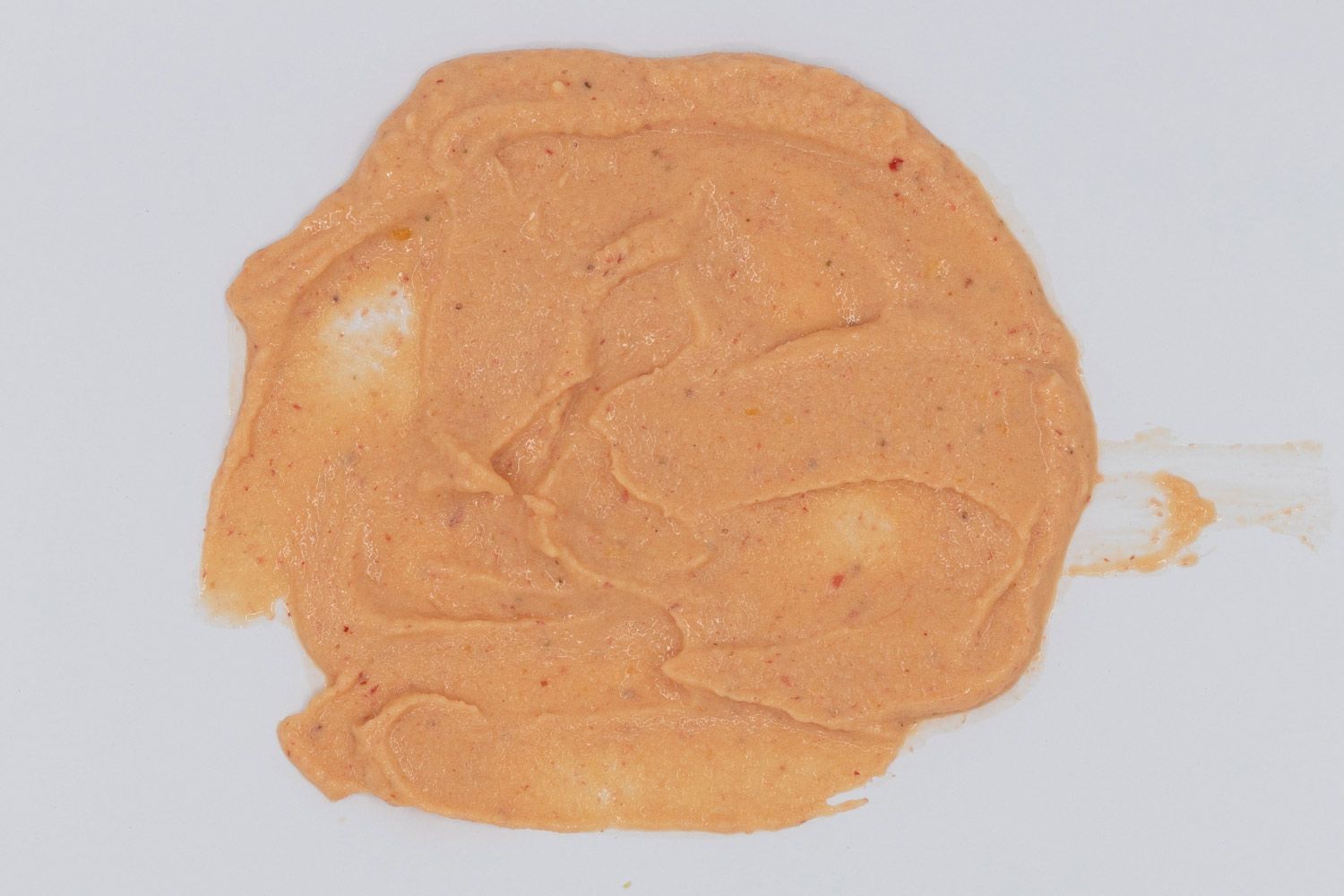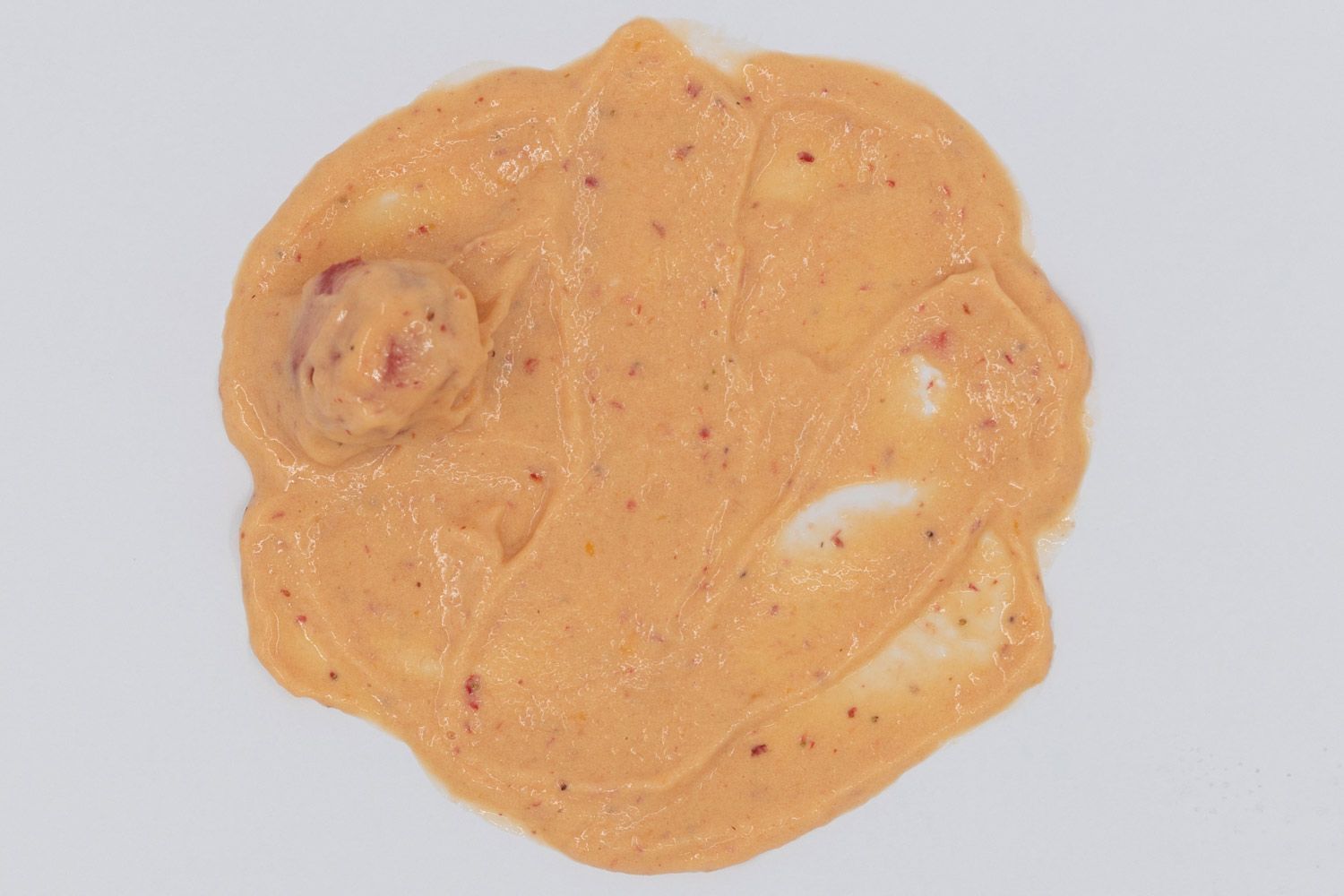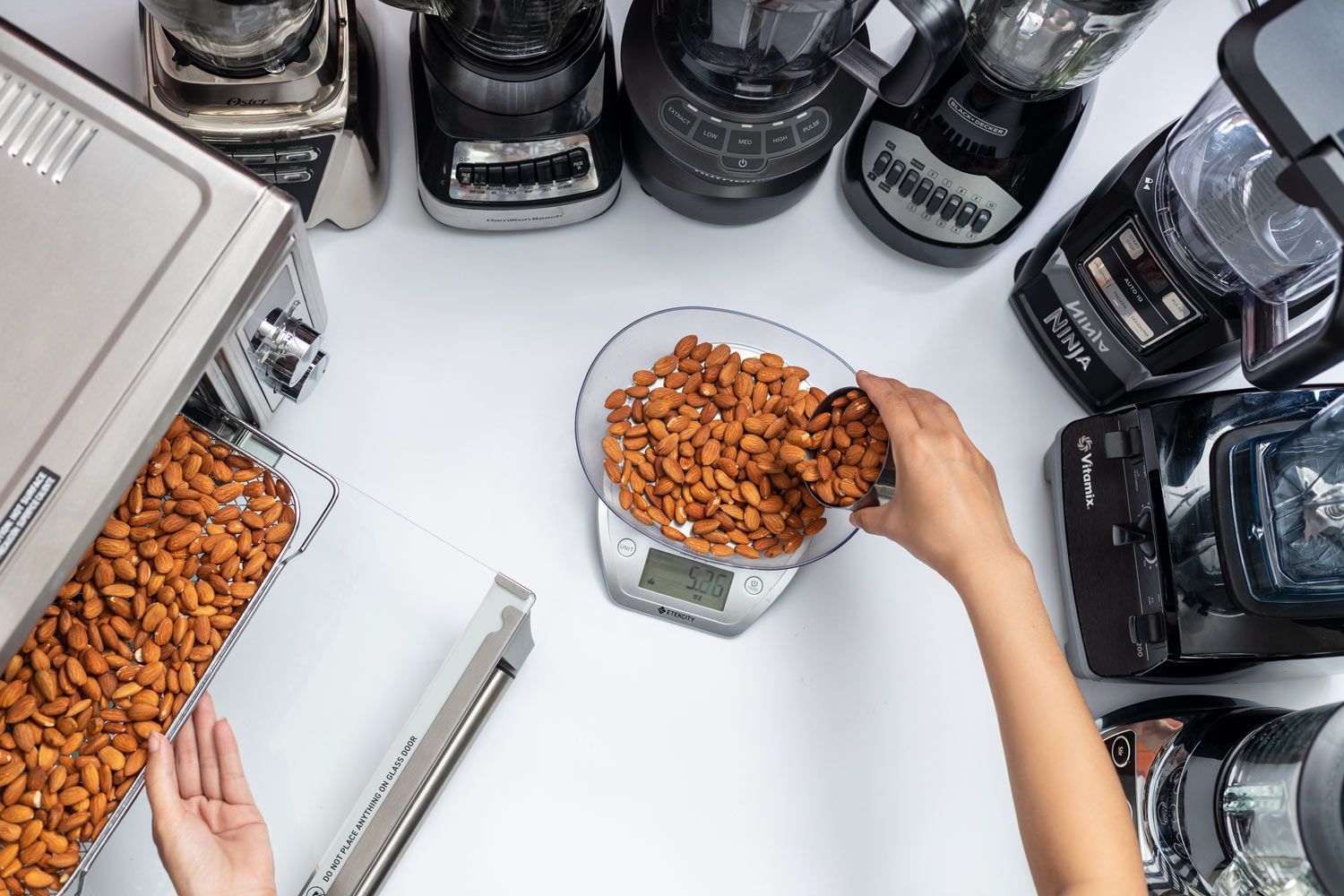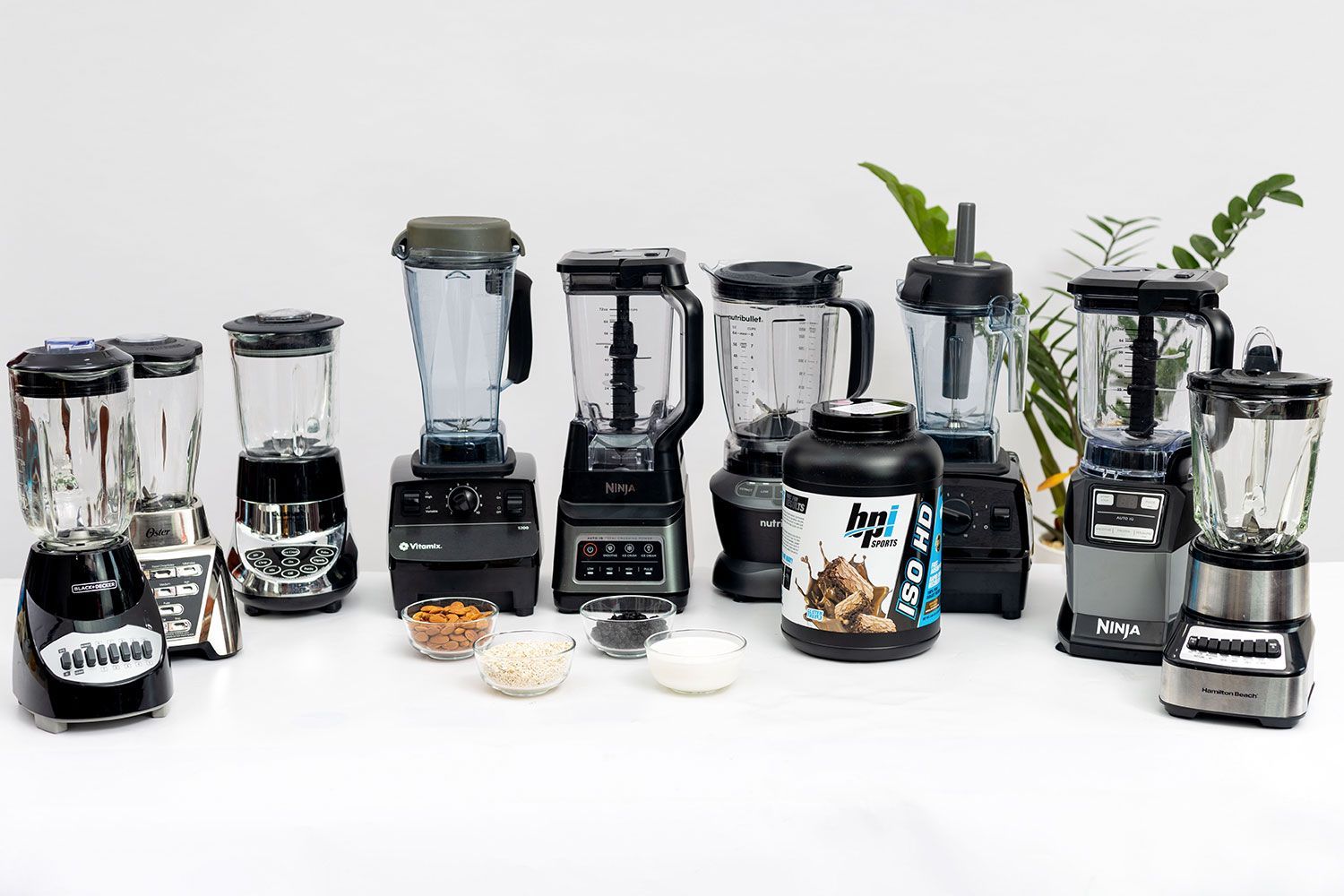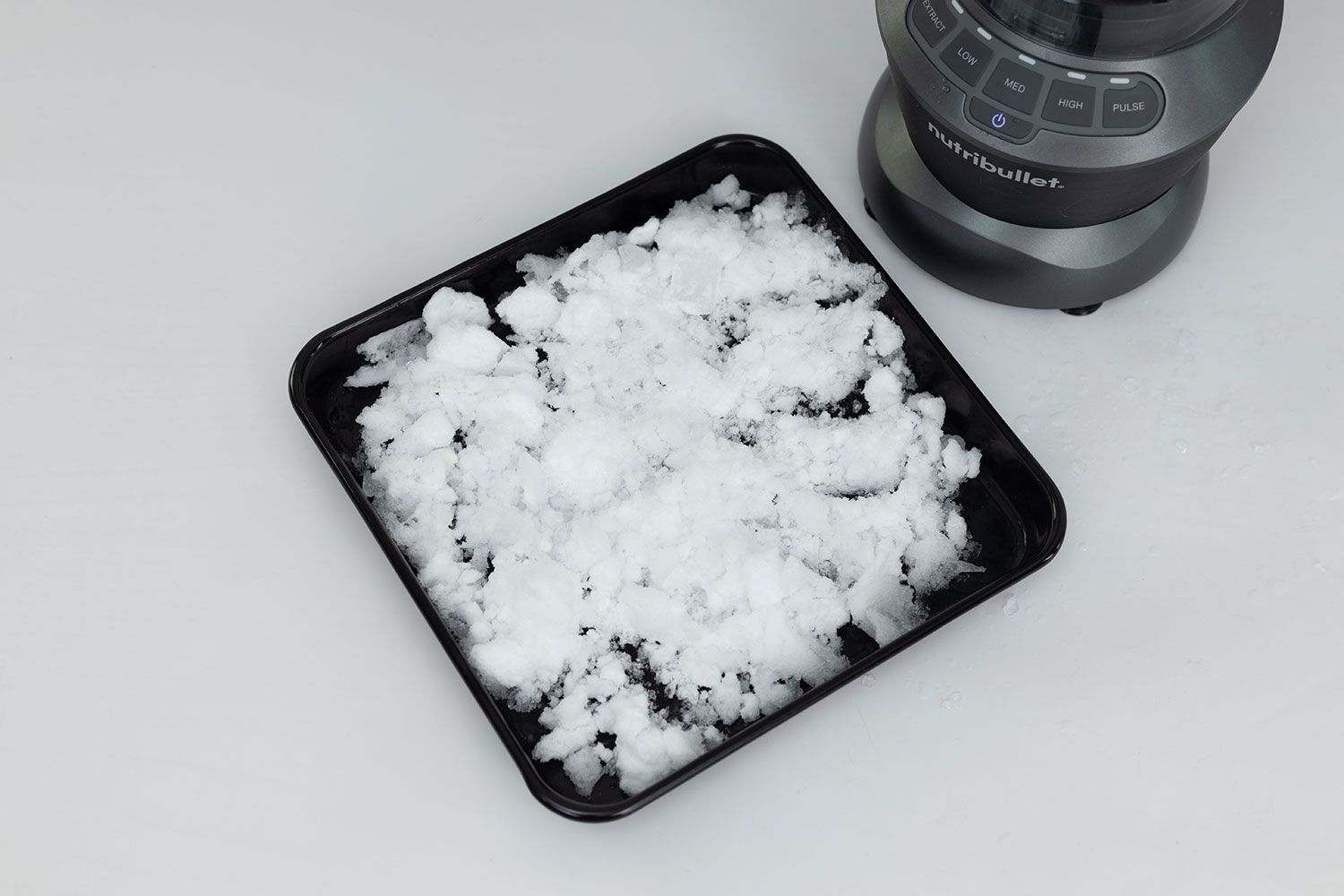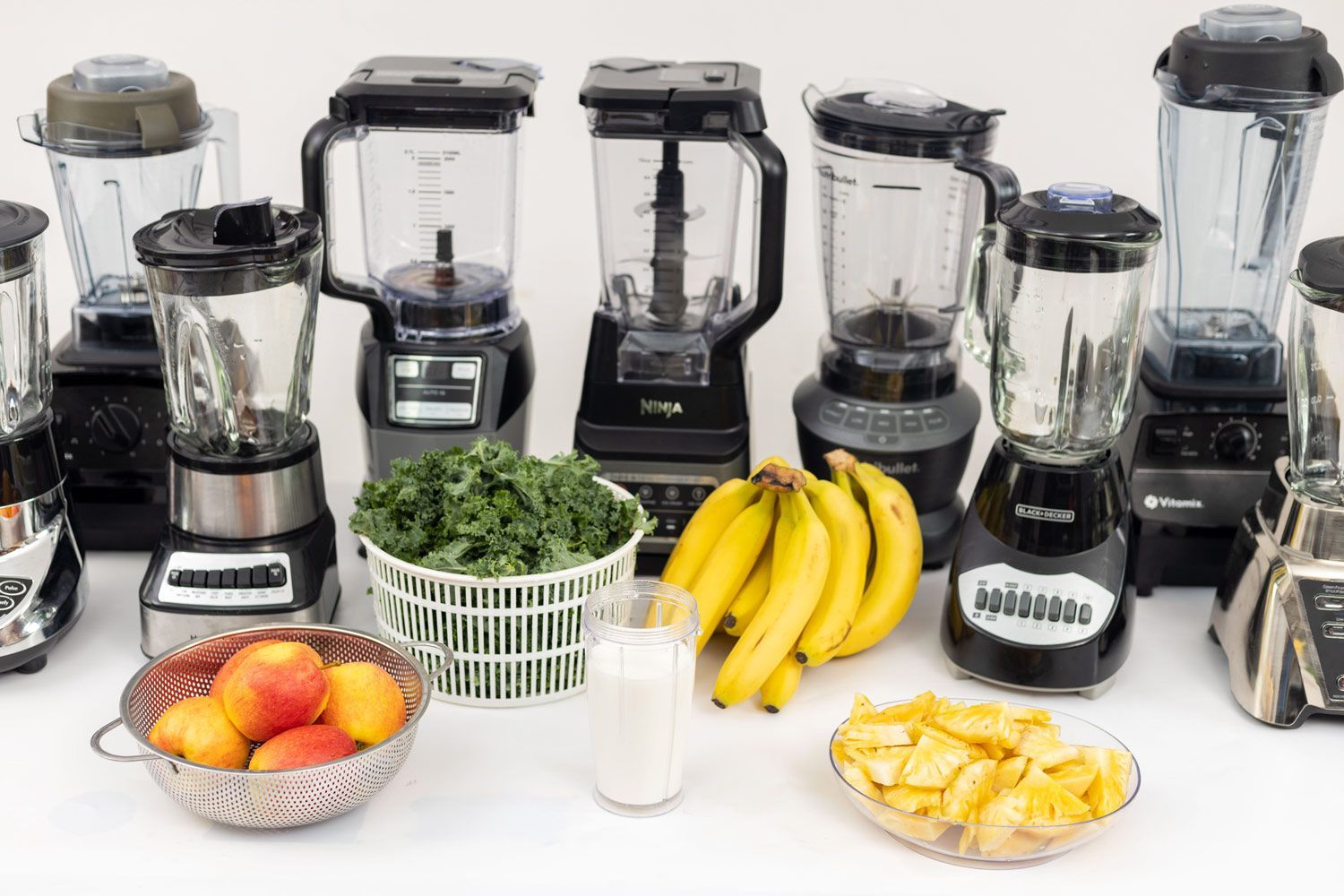Our recommendations are made independently. We may receive commissions from purchases made via our links.
Frozen Fruit Smoothie Test for Full Size Blenders
In this test, we'll be examining how well a full-sized blender can handle frozen strawberries, mangoes, and pineapples, providing valuable insights into its real-world practicality and suitability for making icy treats. If any blender can churn through such ingredients and create a desired texture, it should be considered top-of-the-line products.
This test is part of How Shouldit Tests Full-Sized Blenders v1.0
Full-sized blenders can be used for a variety of tasks, with making frozen fruit smoothies being a particularly popular one. However, since this task can be a significant challenge given the food’s hardness, a blender's performance in this regard can make or break its overall value.
In this test, we'll be examining how well a full-sized blender can handle frozen strawberries, mangoes, and pineapples, providing valuable insights into its real-world practicality and suitability for making icy treats. If any blender can churn through such ingredients and create a desired texture, it should be considered top-of-the-line products.
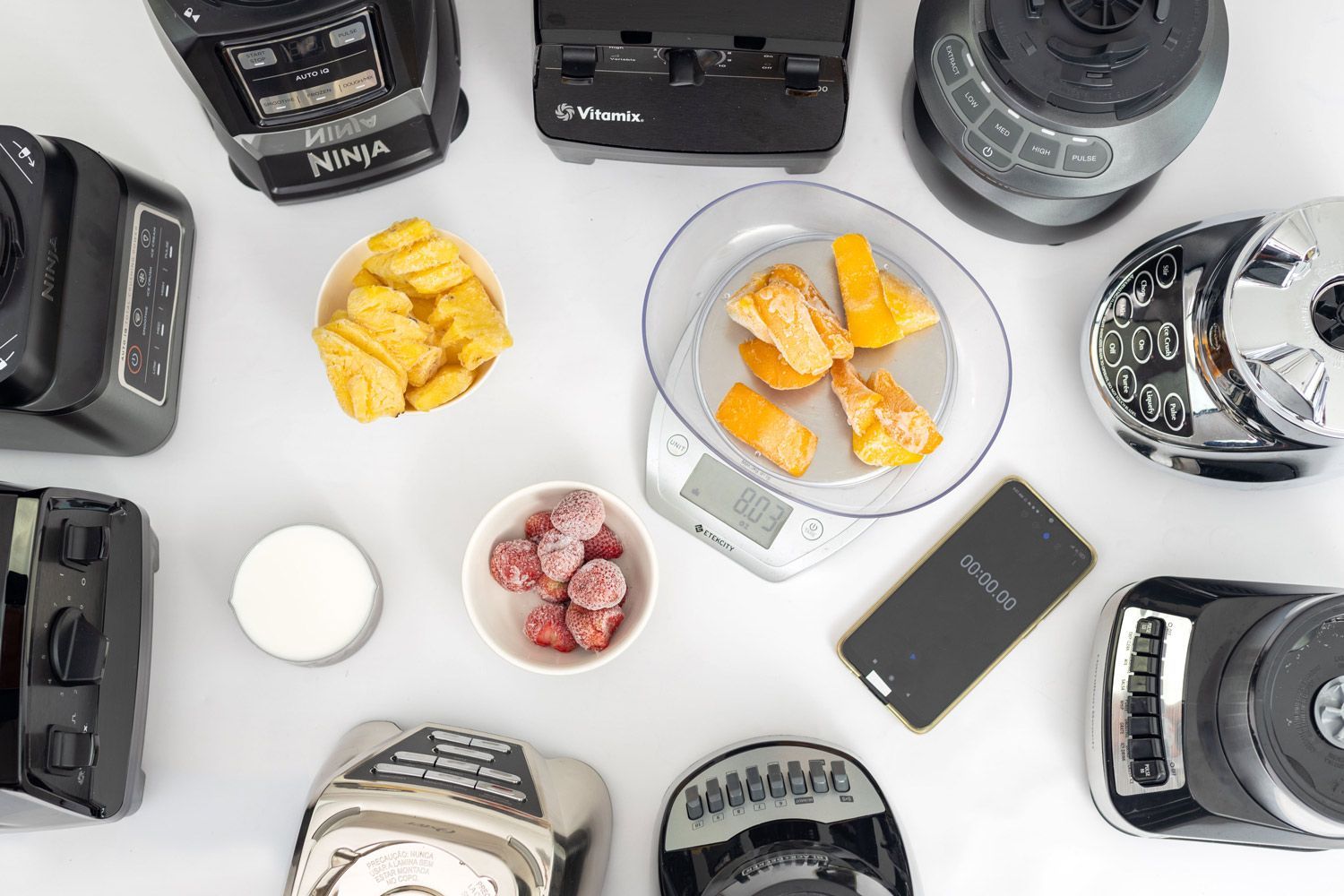
Why the Frozen Fruits Smoothie Test Matters
Our testing smoothie is crafted with plain milk and a combination of four frozen fruits, namely mango, strawberry, and pineapple. These ingredients pose a substantial challenge for blenders due to their varying textures and characteristics. Frozen mangoes, for instance, are notoriously hard, while high-fiber fruits like pineapple contain tough and fibrous material that can be challenging to break down, and their stringy texture tends to get caught in the blender blades. As for strawberries, their small size and hard outer layer make their seeds particularly challenging to process, which can result in a gritty texture if not blended thoroughly.
Overall, this test should give us insights into how each blender performs with such hard-to-blend ingredients, as well as the blending time for two servings of frozen smoothie. By putting the products’ results side by side, we can also determine which one really crushes it and sets itself apart from the others.
There will be many blenders that can handle frozen fruit smoothies with desired texture, but some may have shortcomings in terms of user-friendliness that detract from their overall appeal. This test, therefore, will also delve into the competitive advantage of each blender as well as its strengths and weaknesses.
Testing Recipe: 2 Servings
- 8 oz mangoes
- 8 oz pineapples
- 4 oz strawberries
- 1 cup milk
Testing Procedure
To begin the test, we place all the frozen fruits and milk into the blending cup and blend them using the machine's highest speed setting or the "Frozen Smoothie" preset mode (if available).
While blending, we pause every minute and apply an appropriate method for even distribution of ingredients, depending on the blender. This is due to the power and designs of different blenders that may affect the efficacy of blending techniques.
For instance, low-powered blenders may struggle to chop ingredients into smaller pieces during the initial stages of blending, making it difficult to stir the mixture with a spatula when the ingredients are still mostly intact and dense. In such cases, we may need to use other techniques, like removing the cup and shaking it well, to dislodge stuck blades.
On the other hand, if the blender can grind fruits quickly but fails to draw the ingredients to the blade on its own, we pause the blending process and use a spatula to force the food chunks back into the blades. This is a common issue with higher-powered and larger-sized blenders where the chunks tend to stick to the container's sides, preventing them from reaching the blades.
* Note that neither the duration of the pause required for shaking nor the use of the spatula is factored into the overall blending time.
There are some blenders that come with a tamper, which eliminates the need to shake or scrape down the sides of the container. With these models, we use the tamper throughout the entire blending process, continuously pushing and stirring the fruits altogether.
The desire for the cool and ice-cream-like texture of frozen fruit smoothies is a significant factor driving people's cravings for this beverage. To achieve this consistency, a blender has to blend and combine all ingredients as soon as possible, ensuring that the frozen fruits do not thaw and dilute the smoothie's texture.
For this reason, we have limited each blender's runtime to a maximum of five minutes, based on research and initial trials that indicate that blending for longer can result in a thinner consistency than desired. The test will end when the smoothie achieves the silky smooth texture or when we reach the designated time limit (whichever comes first).
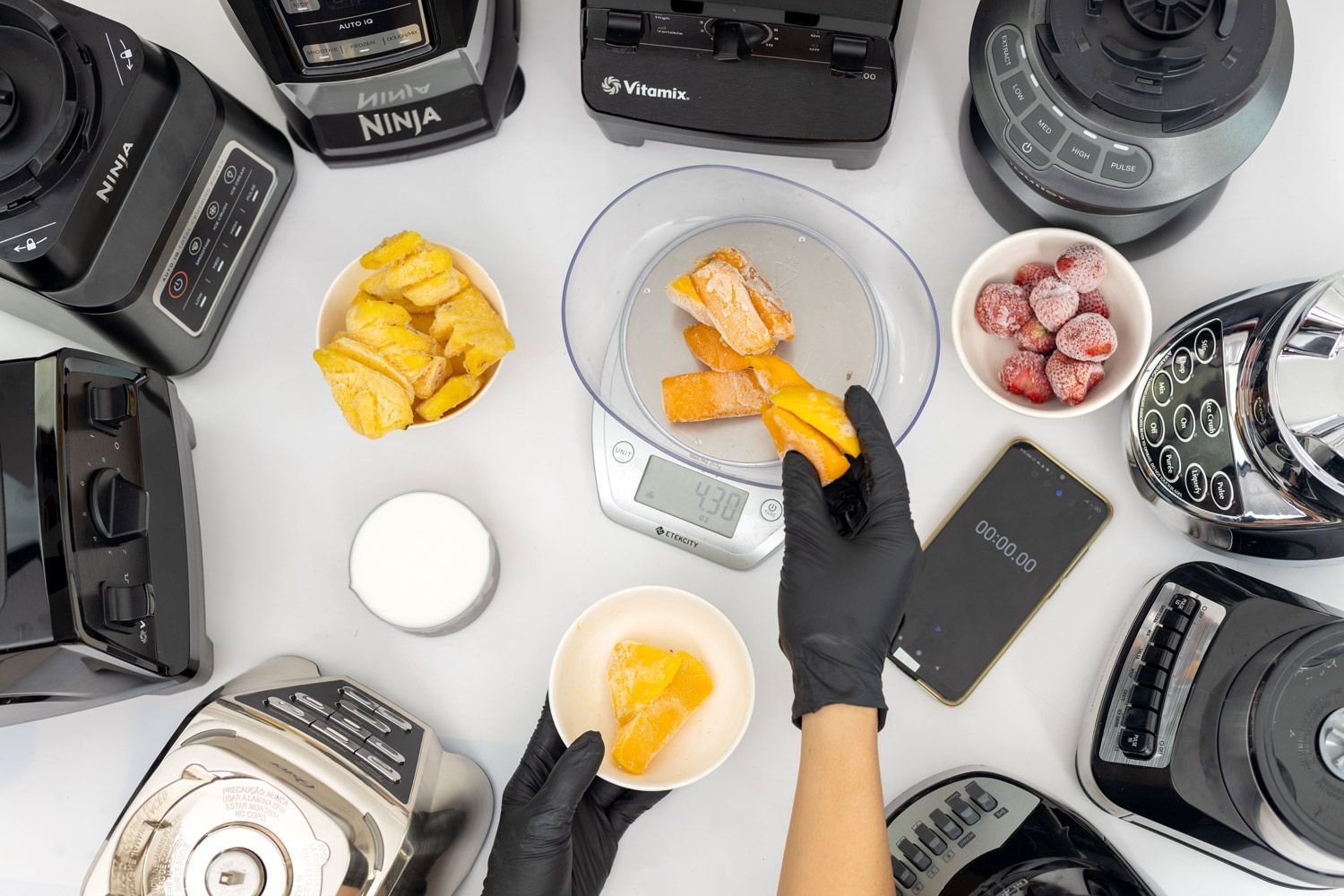
Scoring Scale
The green smoothie test makes up 20% of the overall performance score and is evaluated on a 0-10 scale. The scoring factors include the Blending Time and Blended Result. The smoothie’s flavor is not taken into consideration, as we use the same recipe for each test and expect a consistent taste.
Blending Time Score
The blending time score is calculated based on how long each blender takes to fully pulverize the ingredients. The blender is considered to have failed the test if it couldn’t liquify all the ingredients in 5 minutes, leaving more than three chunks of fruit intact. In this case, it will be awarded no points.
Here’s how our scoring breakdown was designed:
- ≤ 1 min: Frozen fruit smoothies are often favored for their rich, ice-cream-like texture so a decent blender should be capable of producing such results. It must break down and integrate all the fruits quickly to prevent them from thawing and diluting the overall texture. In our preliminary tests, we discovered that certain blenders can accomplish this in around one minute, so anything faster than that earns full points (10 points).
- ≤ 1 min 30 secs: 9.5 points
- ≤ 2 mins: 9 points
- ≤ 2 mins 30 secs: 8.5 points
- ≤ 3 mins: 8 points
- ≤ 3 mins 30 secs: 7.5 points
- ≤ 4 mins: 7 points
- ≤ 4 mins 30 secs: 6.5 points
- ≤ 5 mins: 6 points
- More than 5 mins: 0 points
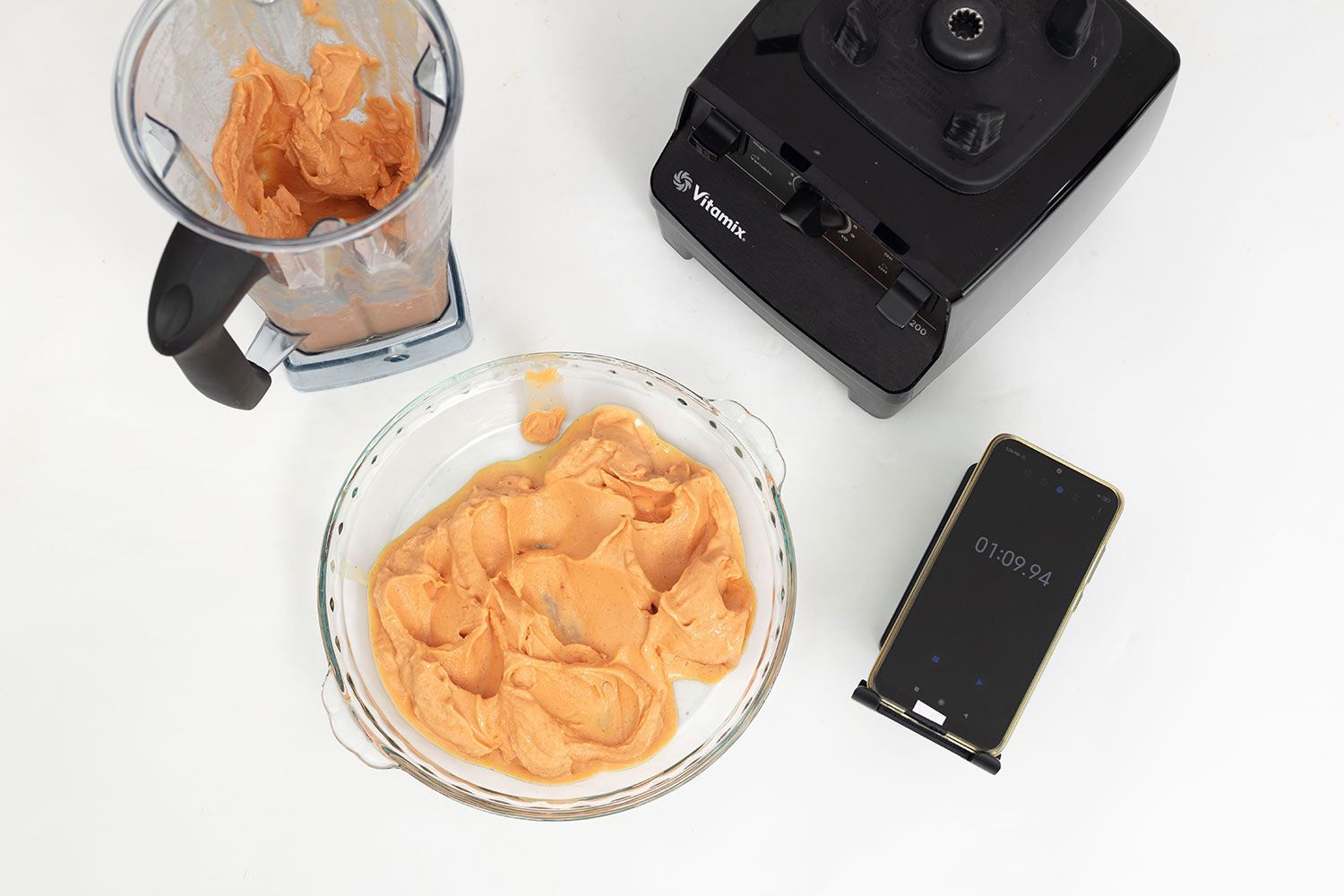
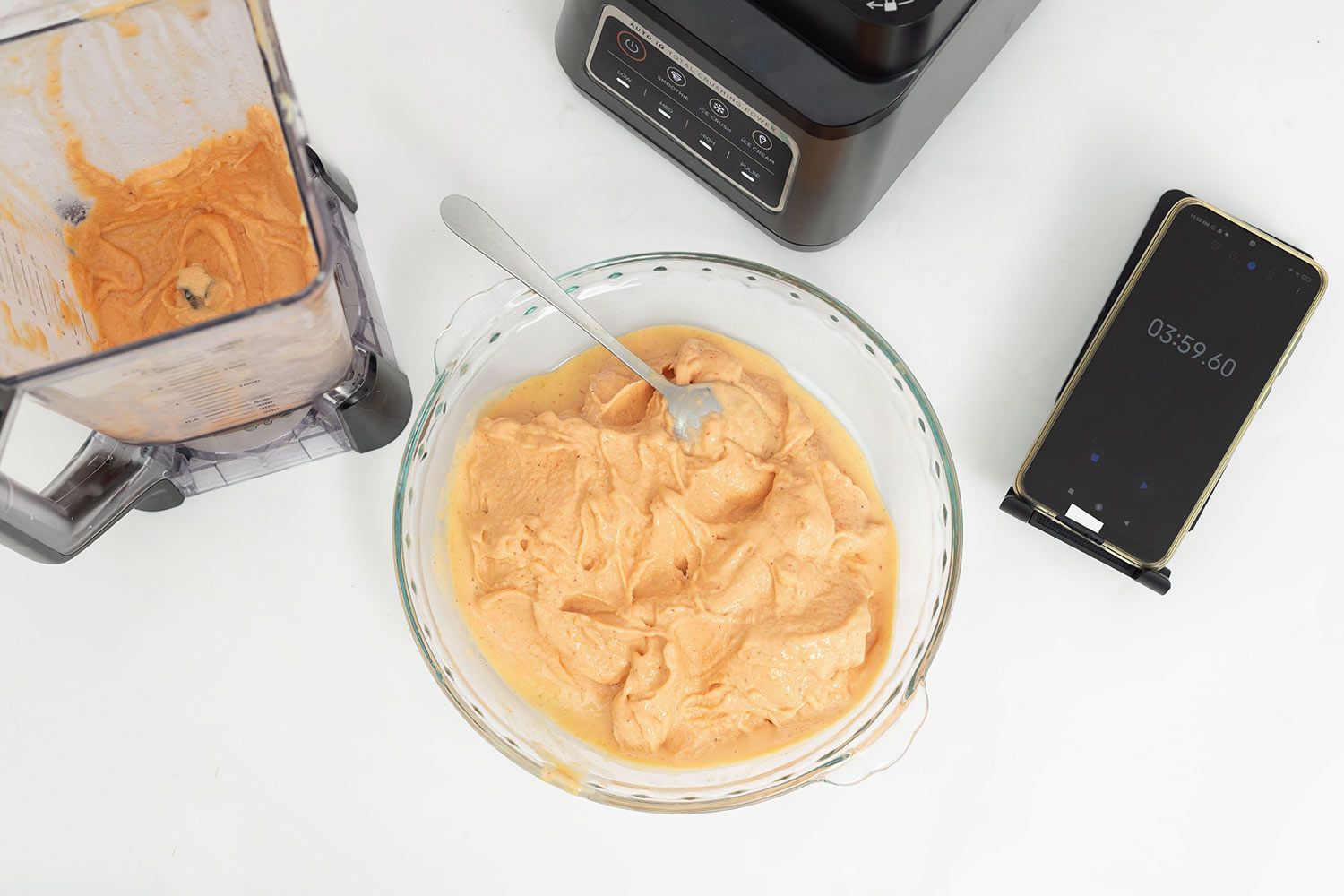
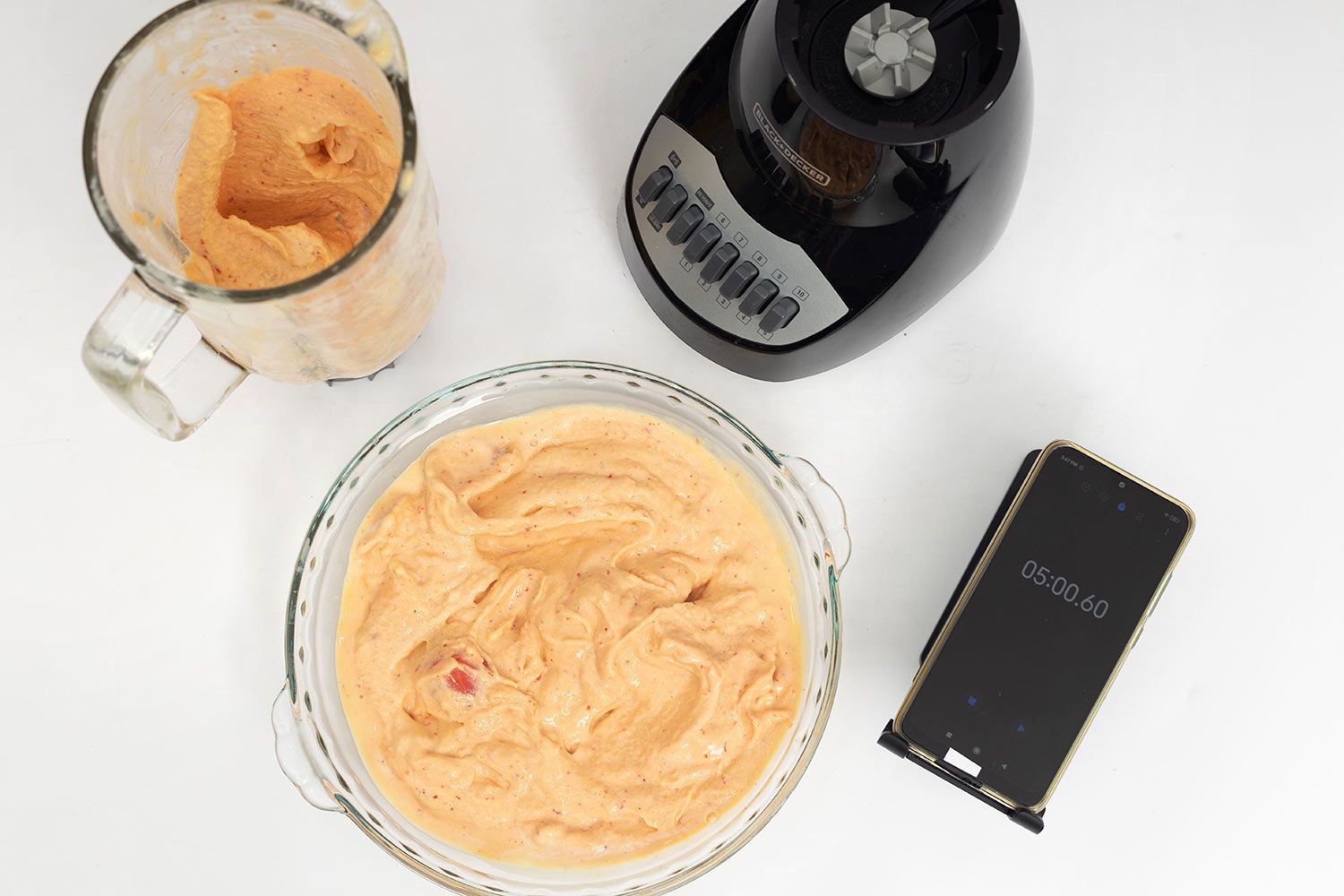
The Blended Result
The score for blended results was rated based on a single primary criterion: texture. After the blender completed the blending process, we spread the smoothie evenly in a white paper to assess its smoothness, and assigned points accordingly. We classified the results into three categories: velvety, smooth, slightly chunky, or chunky, but don’t have a specific score for each variant. Here is how thing works:
- Velvety: A smoothie with a velvety texture is exceptionally smooth, without even any visible fruit flakes. If a blender can churn out such a consistency, its final score is calculated purely according to the blending time.
- Smooth: If the smoothie has no visible chunks of fruits, but still contains tiny flakes of strawberry seeds or peel, we will deduct 0.5 point from the final score.
- Slightly chunky: The smoothie appears to have visible small fruit particles or flakes that are larger than those found in a “smooth” smoothie. We deduct 1 point from the final score for such a texture.
- Chunky: The texture with larger fruit particles or pieces that are easily noticeable to the eye and mouth. It is not smooth and can be somewhat grainy or lumpy so its final score will be deducted 1.5 points.

